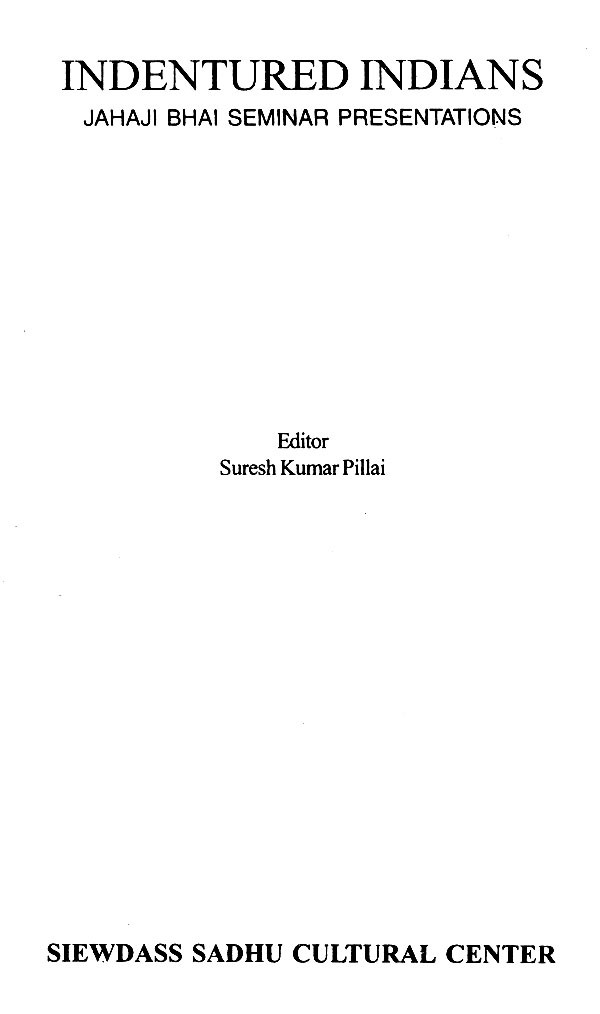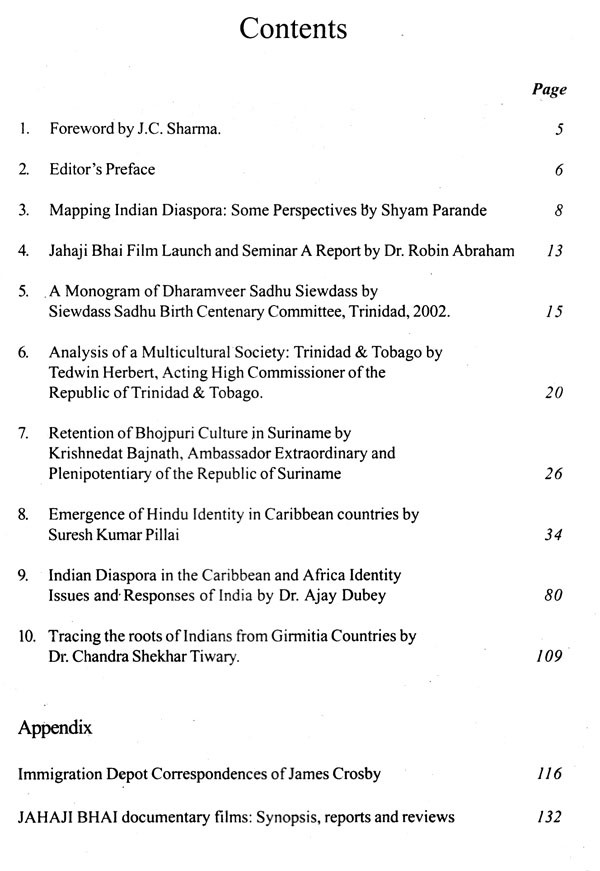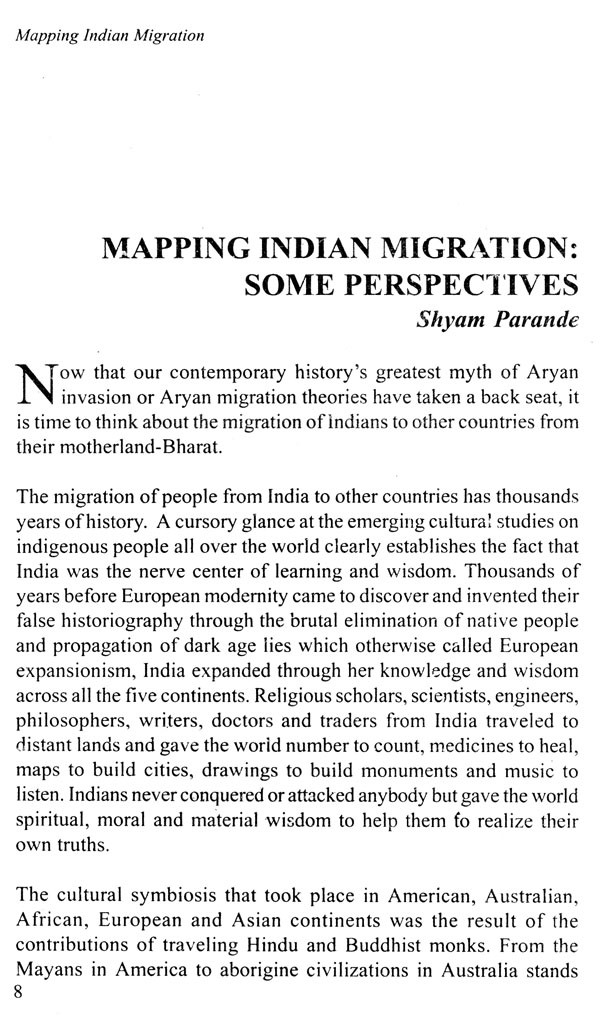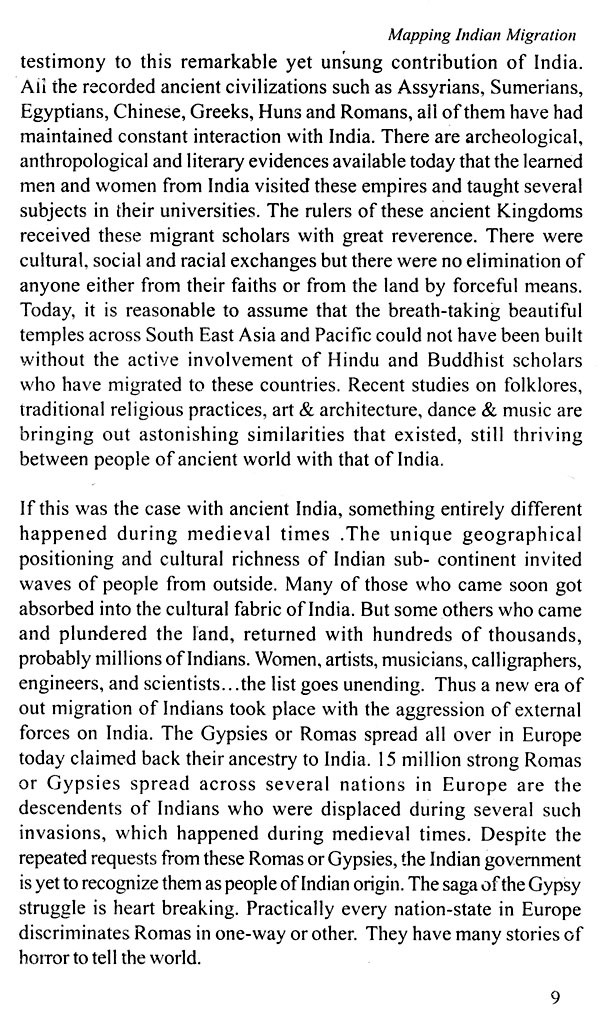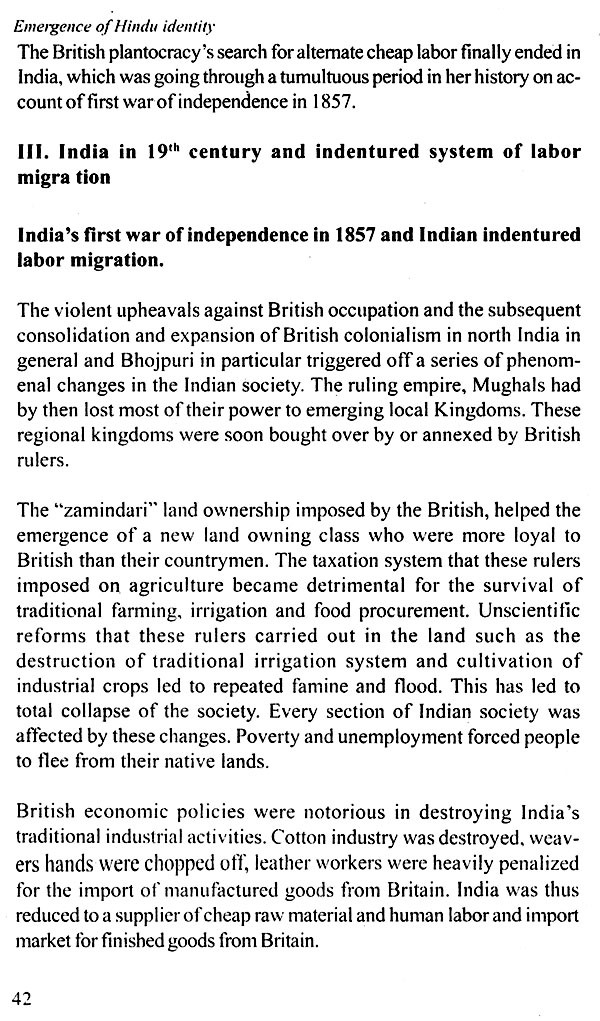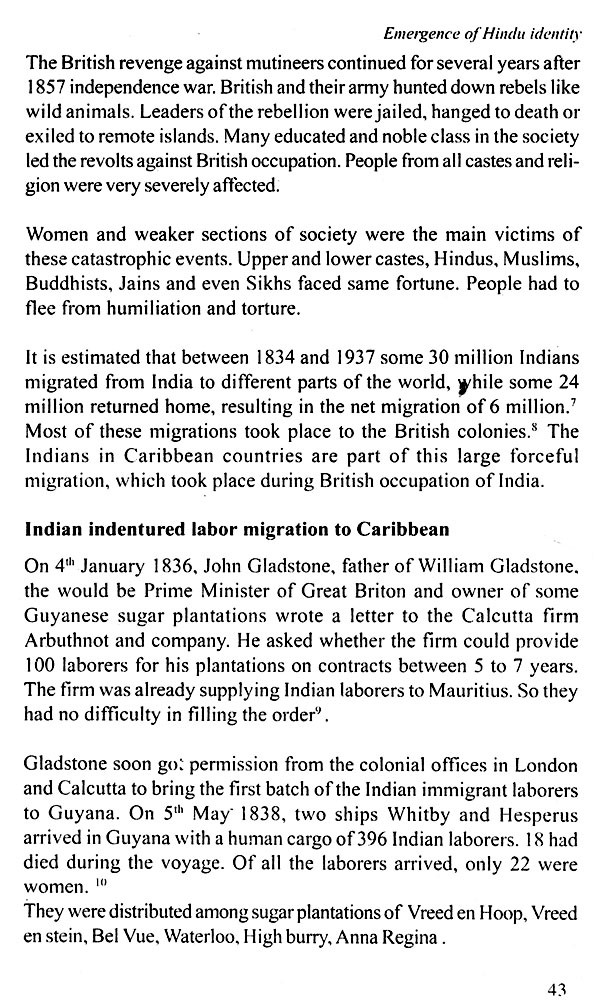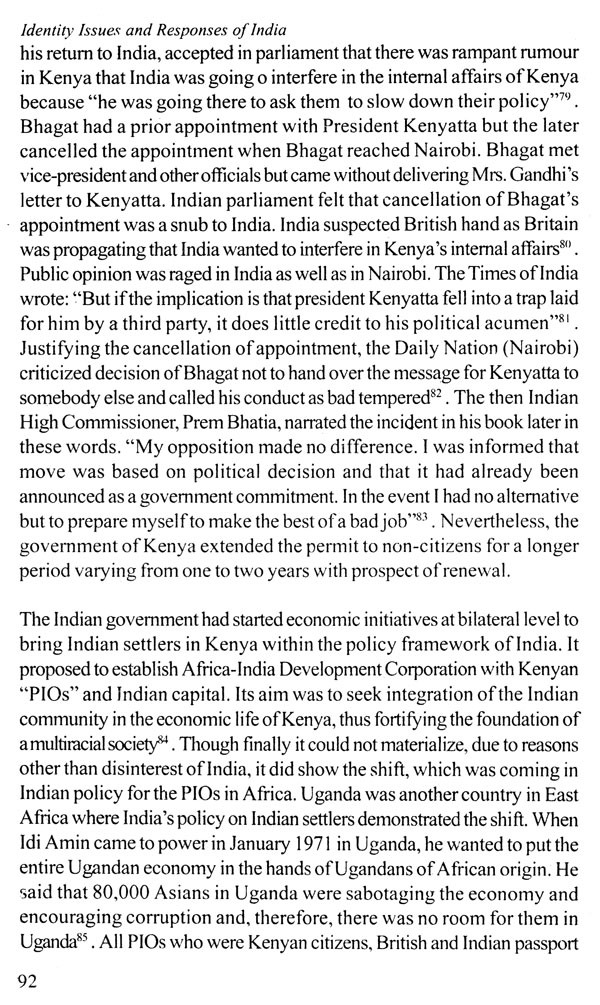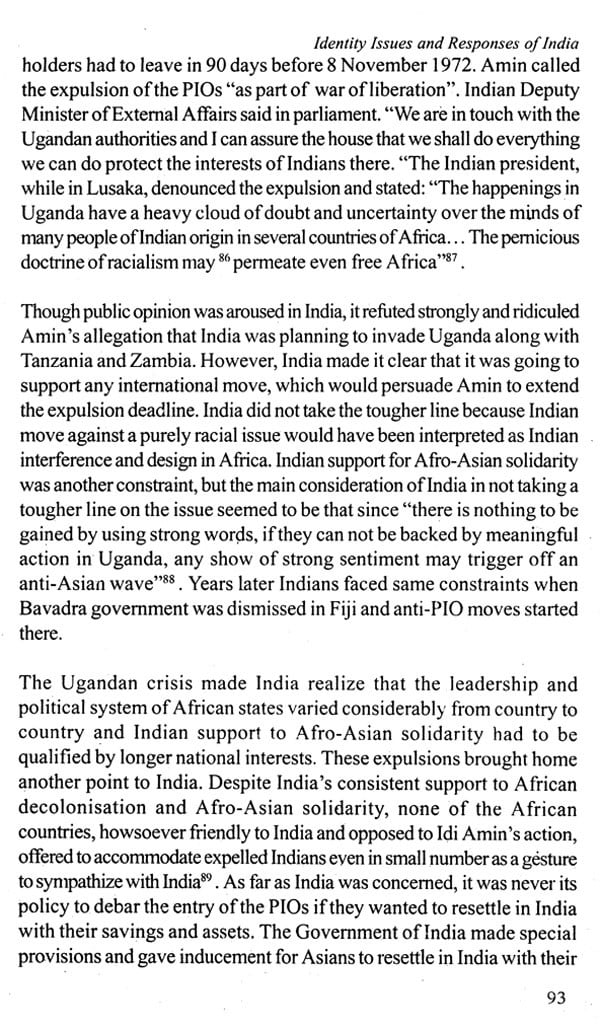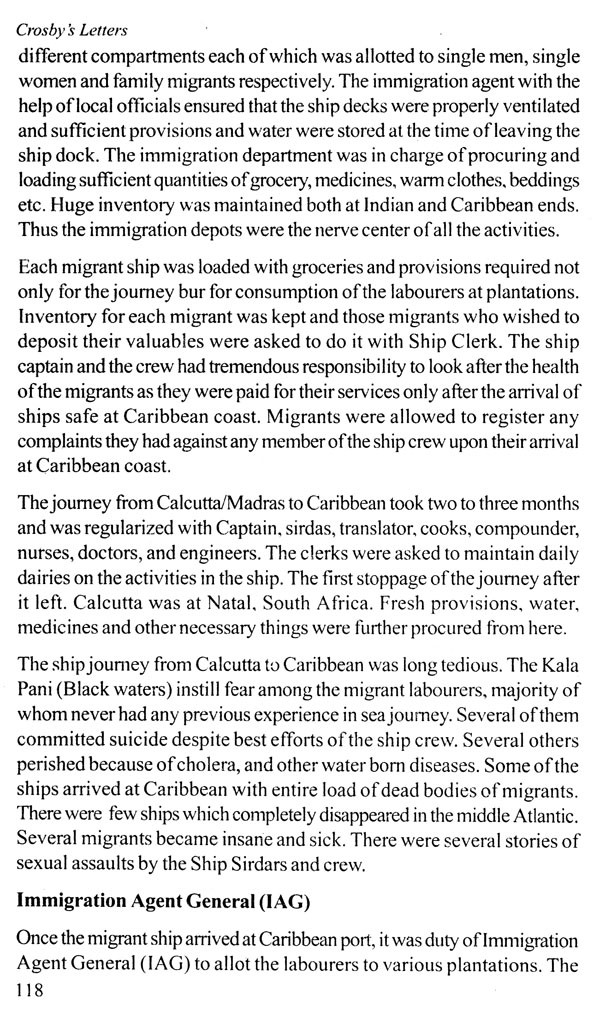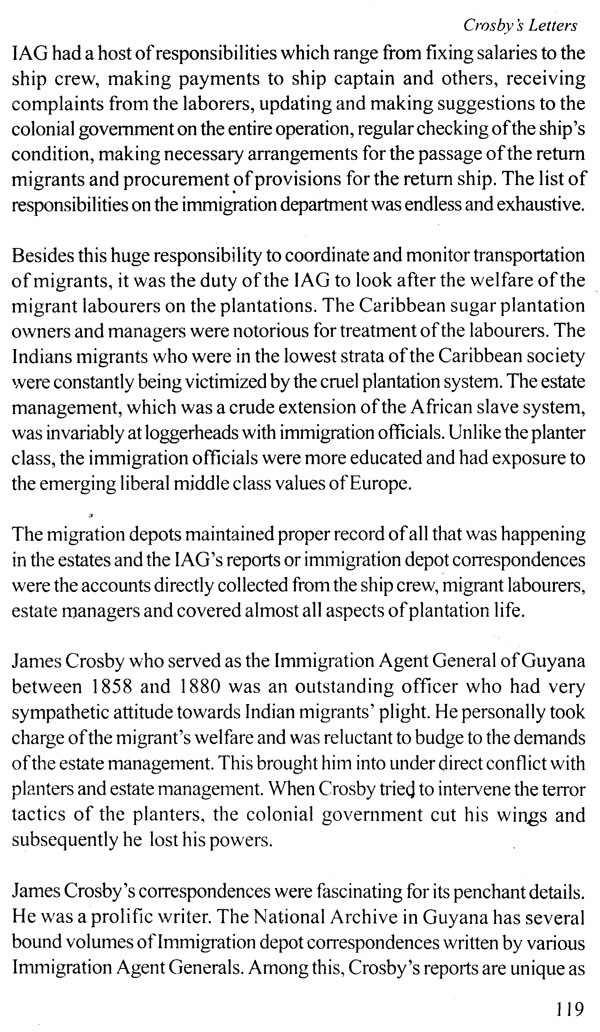
Indentured Indians (Jahaji Bhai Seminar Presentations)
Book Specification
| Item Code: | UAT375 |
| Author: | Suresh Kumar Pillai |
| Publisher: | Siewdass Sadhu Cultural Center For Shri Vishwa Niketan |
| Language: | English |
| Edition: | 2003 |
| Pages: | 136 |
| Cover: | PAPERBACK |
| Other Details | 8.50 X 5.50 inch |
| Weight | 170 gm |
Book Description
The labor shortage of West Indian sugar plantations in the immediate aftermath of African slave emancipation in 1838 forced the 19th century European planters and British colonial government to engage in a massive scab labor trading. When the freed slaves demanded higher wages and better living conditions in the sugar plantations, the planters adopted a new strategy of importing cheap labor from other countries to check the demands of the Africans. After several aborted experiments in China, Portugal, Africa and USA the planters turned their attention to India.
An impoverished India after the First War of Independence, or Great Mutiny in 1857, became the perfect source of cheap labor recruitment. A new system of contractual slavery termed "Indentured Labor was soon developed by the colonial administration to bring migrant laborers from the Indian subcontinent.
For eighty years, between 1838 and until the abolition of Indentureship in 1917, the plantation economies in countries ranging from Sri Lanka to Suriname have survived by the hard labor of these Indian laborers or "Coolies".
"Indentured Indians", is a collection of seminar presentations on Indian indentureship and Indian diaspora made during the launch of documentary film Jahaji Bhai on September 2003 at New Delhi. Journalist turned filmmaker Suresh Kumar Pillai edits the series.
It is almost three years now, when I first discussed the idea of making a half an hour television program on Indian communities in Trinidad with the then Acting High Commissioner of Trinidad & Tobago Mr. Tedwin Herbert in New Delhi. My knowledge about Caribbean societies in general and Indian communities in particular was very limited as to the reading of fictional works of Naipaul, Walcott and Dabydeen. It was Tedwin's encouragements, which eventually took me to Trinidad in April 2001. Initially my idea was to spend some three weeks in Trinidad and then return to India and make a half an hour documentary film. I started working without even a title. Eventually when I returned to India earlier this year, I had spend some 18 months in Trinidad and Guyana and six months in UK researching and shooting the film. This long sojourn would not have been possible without the generous help and assistance of hundreds of friends or fellow Jahajis spread across three continents.
Jahaji Bhai is a borrowed title from the Caribbean history. There are songs, books and cricket clubs etc. in Caribbean word, which carry Jahaji title. When I realized the true meaning of the word and what it signifies for Caribbean society, I decided to use the same title for my project also. The word Jahaji is pregnant with the stories of astonishing survival instincts of hundreds of thousands of poor labourers from India who have embarked on ships that departed from shores of Calcutta, Madras and Pondichery to work as Coolie migrants on sugar plantations owned by 19th European planters. Thousands perished during the long journey through dark waters or Kala Pani. After several months of journey when the labourers eventually landed on the shores of Caribbean a particular bondage developed among them- a human relation stronger than even blood relation- the survivors called each other as Jahajis and Jahajins ship brothers and ship sisters.
The present title "Indentured Indians" is a collection of seminar presentations made during the seminar organized as part of screening of my documentary film series Jahaji Bhai at New Delhi in September 2003. The papers have been selected and presented with an objective to make aware general readers on the history of migration of Indians to Caribbean. The papers also examine how these migrants evolved as the torchbearers of Indian culture in Western hemisphere against several insurmountable oddities.
During the past three years, hundreds of friends from all over the world helped me in shaping Jahaji Bhai project. There are several persons and institutions in Trinidad, Guyana, UK and India to whom I am indebted as a Jahaji Bhai, the list is so exhaustive and would require a book in itself. I am thankful to Sadhoo Siewdass Cultural Center for launching Jahaji Bhai film series as well as publishing this book.
I was happy to be associated with the seminar and the launching of the documentary film "Jahaji Bhai: anatomy of a Migration", held at Siri Fort Auditorium on 19th September 2003. The seminar made a useful contribution in creating better awareness about the trails and tribulations of Indian indentured labour and their descendents in the Caribbean countries. The seminar and the film brought into sharp focus the inhuman treatment meted out to the Indian migrants. Indenture was nothing but a euphemism for slavery.
The migrants of India have zealously retained the significant elements of their cultural heritage, having resisted attempts at conversion at considerable economic and social costs. They have an emotional bonding with India and regard it as their cultural and spiritual home. The scriptures of Indian epics Ramayana, Bhagwat Gita and Hanuman Chalisa serve them as veritable tonic to refurbish their spirituality. It is a tribute to their resilience and courage that they have been able to produce Presidents, Prime Ministers and a Noble Laureate. No one has exemplified the indomitable spirit of Jahaji Bhais better that Sadhoo Siewdass. I salute this great son of India.
**Contents and Sample Pages**
